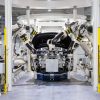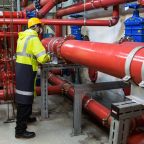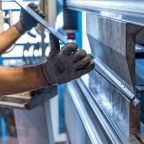
The Intersection of Technology and Manufacturing: What's Next?
Manufacturing has long been at the forefront of technological innovation, continually adapting and evolving to meet new challenges and opportunities. The integration of advanced technologies into manufacturing processes promises to revolutionise the industry, driving efficiency, sustainability, and customisation to new heights. As we look towards the future, the convergence of technology and manufacturing presents a landscape rich with potential. Key advancements such as automation, artificial intelligence, and material science are poised to redefine production methods and capabilities. Understanding these innovations is crucial for businesses aiming to stay competitive and responsive to market demands. This article delves into how these technological trends are shaping the manufacturing sector, with a particular focus on their impact on rubber manufacturing and extrusion processes.
Embracing Automation: The Future of Smart Factories
Automation is transforming manufacturing into a highly efficient, precise, and cost-effective industry. Smart factories, equipped with interconnected machines and systems, represent the pinnacle of this evolution. These facilities utilise advanced automation technologies to streamline production, minimise human error, and increase output. For rubber manufacturers, automation means enhanced consistency in product quality and significant reductions in production time. Automated extrusion lines, for instance, can operate continuously with minimal supervision, ensuring uniformity and precision in rubber products. Furthermore, the integration of sensors and IoT devices enables real-time monitoring and adjustments, further optimising the manufacturing process. As automation technology advances, the potential for customisation and flexibility in rubber manufacturing grows, allowing for more tailored solutions to meet specific client needs.
The Impact of Artificial Intelligence on Production Efficiency
Artificial Intelligence (AI) is revolutionising the way manufacturers approach production efficiency. By leveraging machine learning algorithms and data analytics, AI can predict maintenance needs, optimise production schedules, and enhance quality control. In rubber manufacturing, AI-driven systems can analyse vast amounts of data to detect patterns and anomalies that human operators might miss. This predictive capability helps prevent downtime and reduces waste, ensuring a smoother production process. Moreover, AI can assist in designing more efficient extrusion processes, resulting in better material utilisation and reduced costs. As AI technology continues to evolve, its role in improving production efficiency and decision-making in the manufacturing sector will only become more significant. Embracing AI not only boosts productivity but also paves the way for innovative approaches to manufacturing challenges.
Advancements in Material Science: What’s on the Horizon?
Material science is at the heart of innovation in manufacturing, driving the development of new materials and improving existing ones to meet the demands of various industries. For rubber manufacturers, recent advancements in material science are paving the way for more durable, flexible, and sustainable rubber products. In the UK, rubber manufacturers are increasingly focusing on developing custom rubber extrusions that offer enhanced performance and reliability. These advancements are not only beneficial for traditional applications but also open new possibilities in sectors such as automotive, aerospace, and medical devices.
Rubber suppliers are investing in research and development to create materials that can withstand extreme conditions, resist wear and tear, and provide superior performance. Innovations such as nanotechnology and advanced polymers are being integrated into rubber production, resulting in products that are lighter, stronger, and more environmentally friendly. Custom rubber extrusions are becoming more sophisticated, offering bespoke solutions tailored to specific industrial needs. As material science continues to evolve, rubber manufacturers in the UK and beyond are poised to deliver products that meet the highest standards of quality and sustainability.
The Rise of Robotics: Enhancing Precision and Productivity
Robotics is revolutionising manufacturing by enhancing precision and productivity across various sectors. In modern factories, robots perform complex tasks with remarkable accuracy, speed, and consistency, surpassing human capabilities in many aspects. The integration of robotics into manufacturing processes, including rubber extrusion, has led to significant improvements in product quality and efficiency. Robots can handle repetitive tasks with precision, reducing the likelihood of errors and increasing production rates.
For rubber manufacturers, the adoption of robotics means fewer interruptions in production and a more streamlined workflow. Robotic systems can be programmed to carry out intricate tasks, such as cutting, shaping, and assembling, with a level of precision that ensures uniformity in every product. This is particularly important in custom rubber extrusions, where exact specifications are crucial. Additionally, robots can operate in hazardous environments, minimising risks to human workers and enhancing workplace safety. The rise of robotics in manufacturing not only boosts productivity but also allows for greater flexibility and innovation in product design and development. As technology continues to advance, the role of robotics in manufacturing will only grow, driving further improvements in efficiency and precision.
Big Data and Analytics: Driving Informed Manufacturing Decisions
Big data and analytics are transforming the manufacturing landscape by providing unprecedented insights into every aspect of production. By collecting and analysing vast amounts of data, manufacturers can identify trends, predict outcomes, and make informed decisions that enhance efficiency and productivity. In rubber manufacturing, the application of big data can lead to significant improvements in quality control, inventory management, and overall operational efficiency.
Rubber manufacturers can use data analytics to monitor the performance of their machinery, predict maintenance needs, and avoid costly downtime. By analysing production data, they can optimise processes, reduce waste, and ensure that products meet stringent quality standards. Additionally, data analytics can provide valuable insights into market trends and customer preferences, enabling manufacturers to develop products that better meet the needs of their clients. For rubber suppliers, leveraging big data means staying ahead of the competition by continually improving their offerings and operations. As the manufacturing sector becomes increasingly data-driven, the ability to harness the power of big data will be a key differentiator for successful companies.
Cybersecurity in Manufacturing: Protecting the Digital Frontier
As manufacturing becomes more digitised and interconnected, the importance of cybersecurity cannot be overstated. The integration of advanced technologies such as IoT, AI, and robotics into manufacturing processes has created new vulnerabilities that cybercriminals can exploit. Protecting sensitive data, intellectual property, and operational systems from cyber threats is crucial for maintaining the integrity and continuity of manufacturing operations.
For rubber manufacturers, implementing robust cybersecurity measures is essential to safeguard their production lines and proprietary technologies. Cybersecurity strategies must include regular risk assessments, employee training, and the deployment of advanced security solutions to detect and mitigate potential threats. Ensuring that all digital systems and devices are secure helps prevent disruptions that could lead to significant financial losses and damage to a company's reputation.
Moreover, as manufacturers increasingly rely on digital supply chains, securing these networks becomes vital. Cybersecurity breaches can have cascading effects, impacting suppliers, partners, and customers. By prioritising cybersecurity, manufacturers can protect their digital frontier, maintain operational resilience, and build trust with their clients and stakeholders. As technology continues to evolve, so too must the strategies to defend against cyber threats, ensuring the ongoing safety and success of manufacturing enterprises.
Conclusion
The intersection of technology and manufacturing heralds a new era of innovation and efficiency. From the adoption of automation and AI to advancements in material science and robotics, these technological trends are reshaping the industry. For rubber manufacturers and other sectors, these innovations offer unprecedented opportunities to enhance product quality, reduce costs, and drive sustainability. As we look ahead, staying abreast of these developments will be crucial for maintaining a competitive edge and meeting the evolving demands of the market. The future of manufacturing is bright, driven by the relentless pursuit of technological advancement and excellence.














